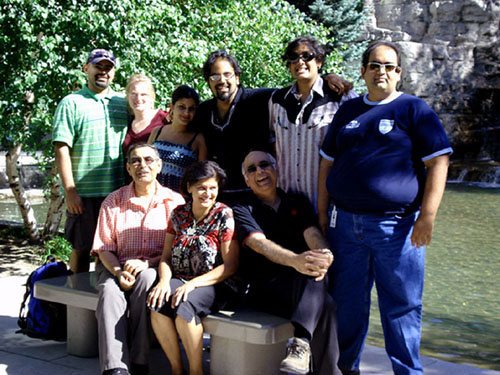Astronomers have discovered their "holy grail" - a planet capable of supporting life outside our solar system.
 |
| New 'life in space' hope after billions of 'habitable planets' found in Milky Way Photo: NASA |
The planet lies in what they describe as a 'habitable zone', neither too near its sun to dry out or too far away which freezes it.
And the discovery could help answer the question of whether we are alone in the universe, which has been plagued astronomers and alien fanatics for years.
Scientists found the planet, Gliese 667Cc, orbiting around a red dwarf star, 22 light years away from the earth.
Red dwarf stars are the most common stars in the neighbourhood of the sun, usually hosting planets called gas giants, which are not composed of rock matter.
Re-analysing data from the European Southern Observatory, the astronomers found Gliese 667Cc is a solid planet with roughly four and a half times the mass of Earth.
The University Göttingen and University of California scientists have calculated the planet recieves ten per cent less light from its red dwarf star than the Earth gets from the Sun.
As the light is in the infrared area, the planet still receives nearly the same amount of energy as the Earth, meaning water could be liquid and surface temperatures could be similar to ours.
Astronomers are hailing the plant as the 'Holy Grail' of discoveries, as 20 years ago scientists were still arguing about the existence of planets beyond our solar system.
Since the discovery of the first extrasolar planet in 1995, astronomers have confirmed the existence of more than 760 planets beyond the solar system, with only four believed to be in a habitable zone.
One of the most successful tools of planet hunters is the High Accuracy Radial Planetary Searcher (HARPS) telescope, which measures the radial velocity of a star.
Scientists using this telescope analyse the small wobbles in a stars motion caused by the gravitational response of a planet, determining the position and size of a planet indirectly.
Currently, they can detect planets which are 3-5 times the mass of the Earth but, in the future, they could detect planets which are smaller than twice the mass of Earth.
Steven Vogt, an astronomer from the University of California, said: "It´s the Holy Grail of exo-planet research to find a planet orbiting around a star at the right distance so it´s not too close where it would lose all its water and not too far where it would freeze.
"It´s right there in the habitable zone - there´s no question or discussion about it. It is not on the edge. It is right in there."
Guillem Anglada-Escudé, of University Göttingen, Germany, said: "With the advent of new generation of instruments, researchers will be able to survey many dwarf stars for similar planets and eventually look for spectroscopic signatures of life in one of these worlds."
And the discovery could help answer the question of whether we are alone in the universe, which has been plagued astronomers and alien fanatics for years.
Scientists found the planet, Gliese 667Cc, orbiting around a red dwarf star, 22 light years away from the earth.
Red dwarf stars are the most common stars in the neighbourhood of the sun, usually hosting planets called gas giants, which are not composed of rock matter.
Re-analysing data from the European Southern Observatory, the astronomers found Gliese 667Cc is a solid planet with roughly four and a half times the mass of Earth.
The University Göttingen and University of California scientists have calculated the planet recieves ten per cent less light from its red dwarf star than the Earth gets from the Sun.
As the light is in the infrared area, the planet still receives nearly the same amount of energy as the Earth, meaning water could be liquid and surface temperatures could be similar to ours.
Astronomers are hailing the plant as the 'Holy Grail' of discoveries, as 20 years ago scientists were still arguing about the existence of planets beyond our solar system.
Since the discovery of the first extrasolar planet in 1995, astronomers have confirmed the existence of more than 760 planets beyond the solar system, with only four believed to be in a habitable zone.
One of the most successful tools of planet hunters is the High Accuracy Radial Planetary Searcher (HARPS) telescope, which measures the radial velocity of a star.
Scientists using this telescope analyse the small wobbles in a stars motion caused by the gravitational response of a planet, determining the position and size of a planet indirectly.
Currently, they can detect planets which are 3-5 times the mass of the Earth but, in the future, they could detect planets which are smaller than twice the mass of Earth.
Steven Vogt, an astronomer from the University of California, said: "It´s the Holy Grail of exo-planet research to find a planet orbiting around a star at the right distance so it´s not too close where it would lose all its water and not too far where it would freeze.
"It´s right there in the habitable zone - there´s no question or discussion about it. It is not on the edge. It is right in there."
Guillem Anglada-Escudé, of University Göttingen, Germany, said: "With the advent of new generation of instruments, researchers will be able to survey many dwarf stars for similar planets and eventually look for spectroscopic signatures of life in one of these worlds."
(reproduced unedited from THE TELEGRAPH)



No comments:
Post a Comment